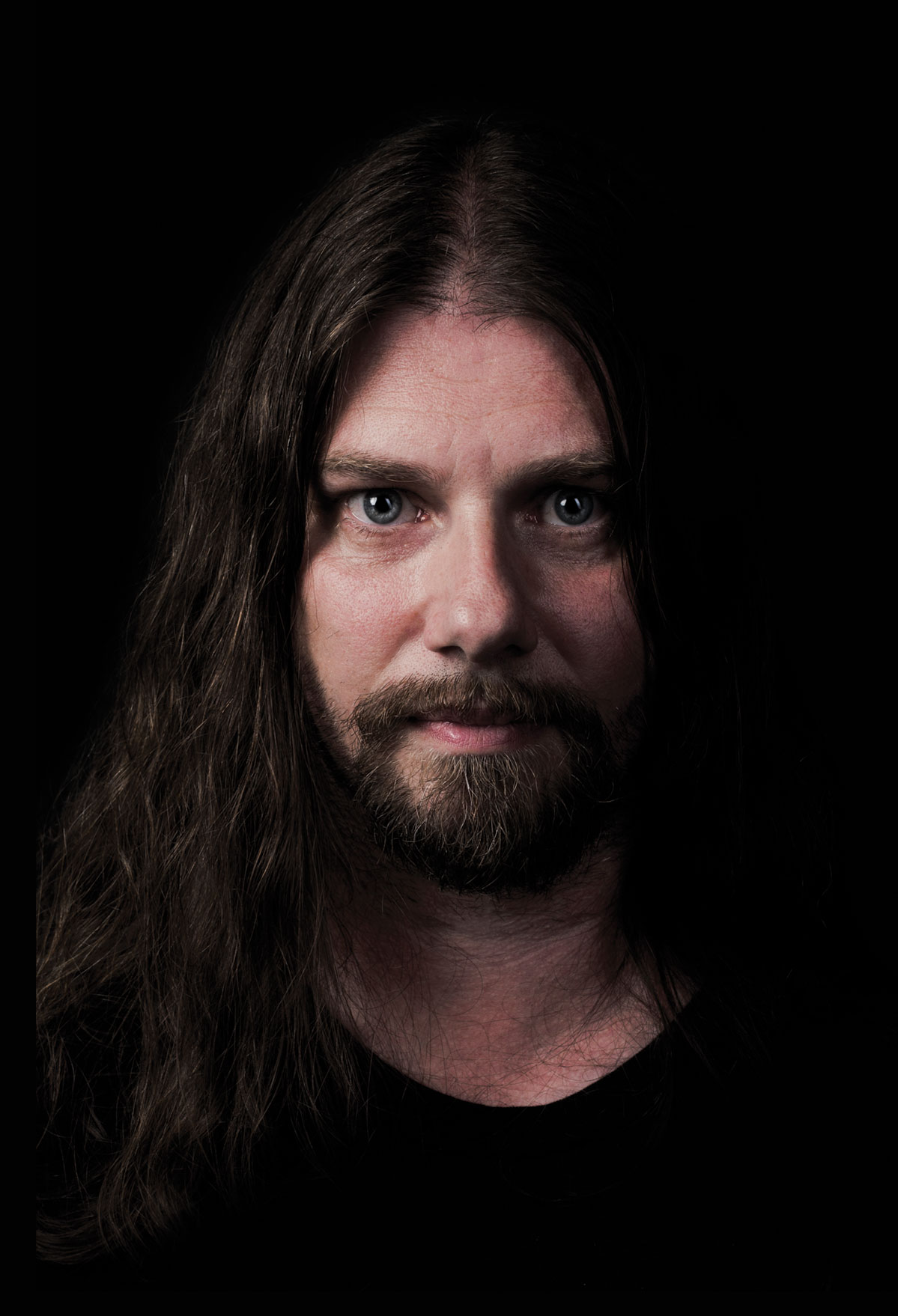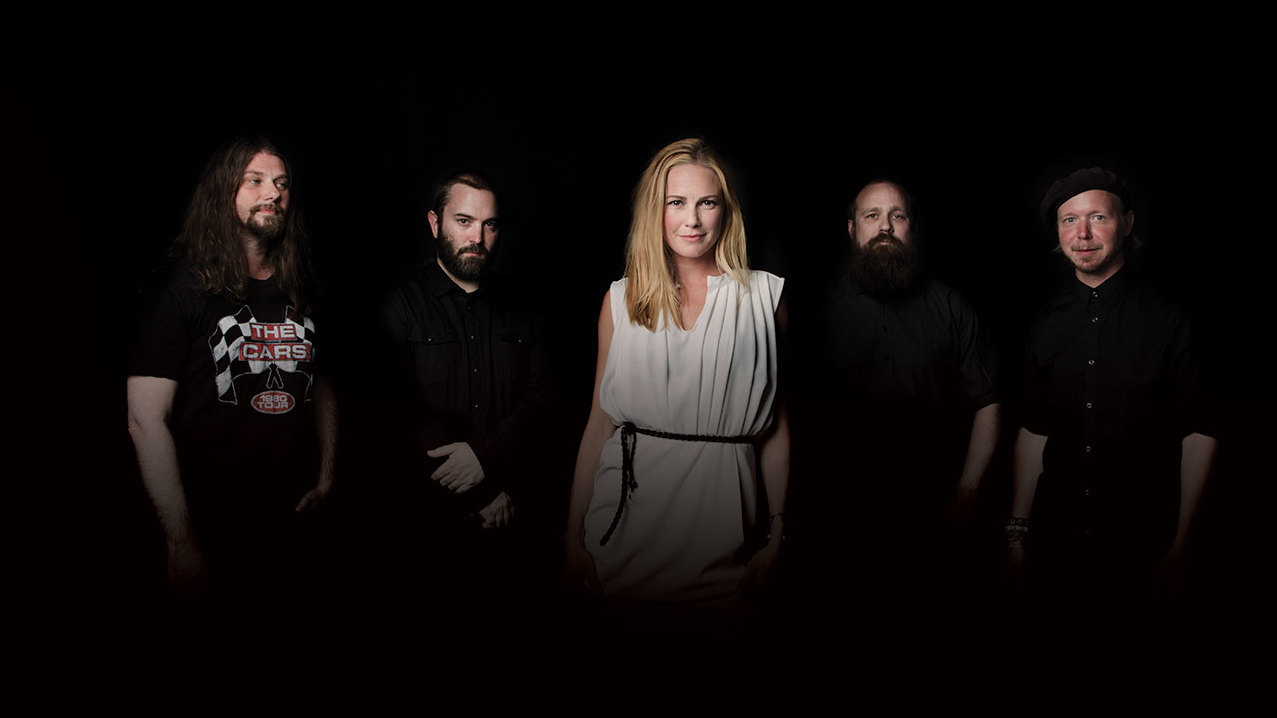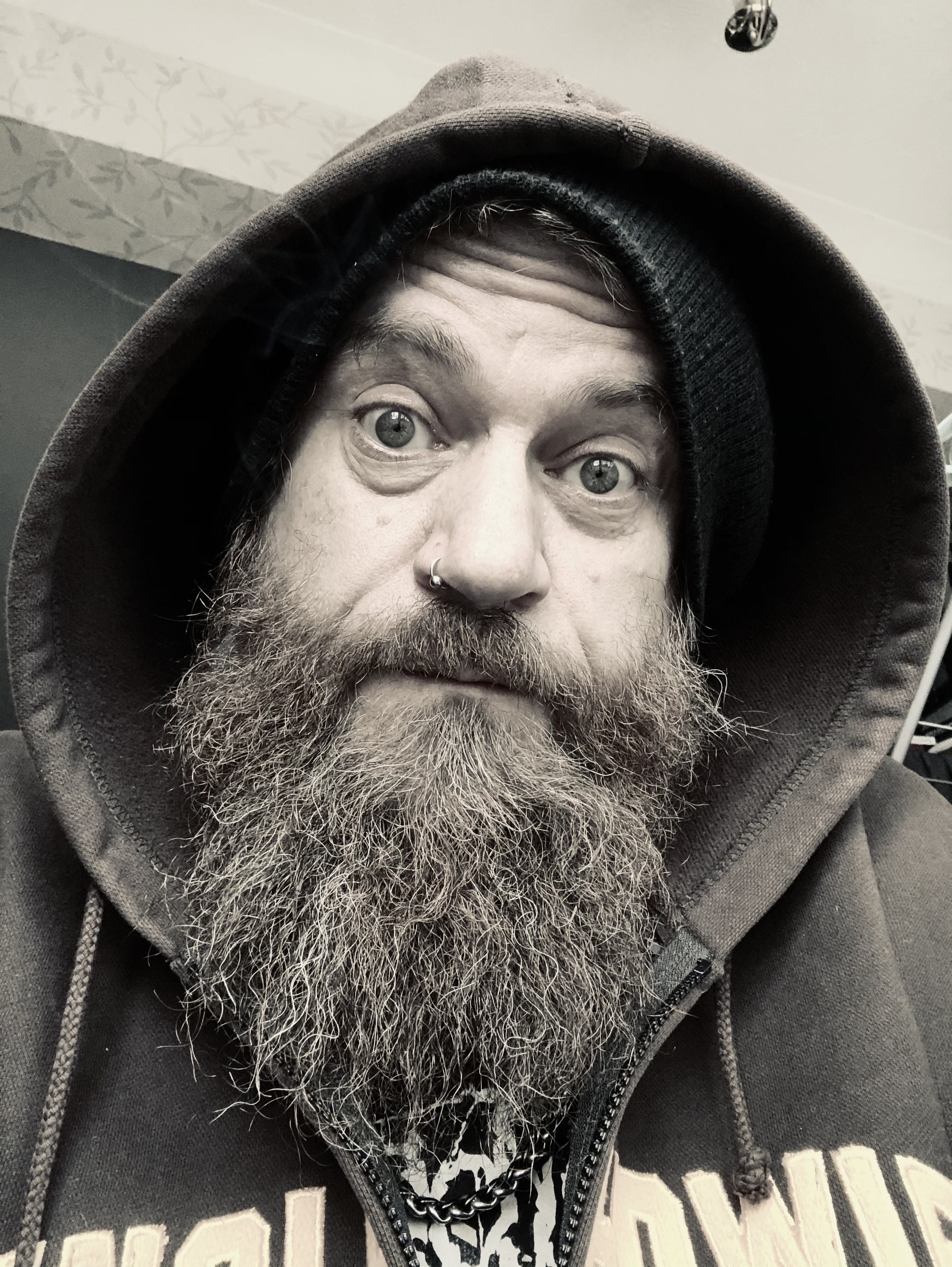“Back when we started, the only music that had any exposure in Norway was either grunge or Euro-dance, so it was a terrible climate for prog!” laughs White Willow guitarist and founder Jacob Holm-Lupo. “It wasn’t that people didn’t like prog, it was just that they didn’t know what it was.”
As we bask in the warmth of a prog scene in rude health, it’s easy to forget how barren and unwelcoming the landscape was for progressive rock music a quarter of a century ago. Although still something of a cult concern, White Willow are now well established as one of the foremost Scandinavian prog bands of the modern era, with a sturdy catalogue of bewitching albums that could hardly be a better representation of what happens when great ideas, old and new, collide. But prior to the band’s signing with US label Laser’s Edge back in the early 90s, Holm-Lupo wasn’t convinced that playing prog was going to be fruitful.
“Journalists would ask what music we play and we’d say ‘progressive rock’ and they’d never heard of it!” he chuckles. “So that was that, until one day we got this tape from some friends in Sweden and it was the demos for the first Änglagård album. Finally we’d found someone else that was doing what we were doing. Then we started forming bonds with the Swedish bands and we realised there was a scene.”
White Willow have just released their seventh album, Future Hopes, and lots of people will be very interested indeed. But when the band released their debut, Ignis Fatuus, in 1995, their expectations were understandably low.
“We thought maybe an aunt or two might buy a copy, but that would be as good as it got,” Holm-Lupo recalls. “The first gig we played was in our hometown, to 50 people, just our friends. But then, for our second gig ever, we got an invitation to play at ProgFest in Los Angeles in front of 3,000 people. It was only when we arrived there that we understood, like, ‘Okay, this is happening! There’s a scene, there are people and some of them have even bought our album…’
“In the end, the first album sold about 5,000 copies and then after that there was really no going back.”
Newcomers to the White Willow catalogue could be forgiven for thinking that Holm-Lupo and his comrades have been in a state of permanent transformation since Ignis Fatuus. Every one of the band’s albums seems to exist within its own self-contained sonic world, ranging from the stripped-down post-rockisms of 1998’s Ex Tenebris and the overblown symphonic pop of 2000’s Sacrament through to the heavier textures of 2004’s Storm Season.
There are definitely a few red lines that pass through everything Holm-Lupo has written to date, from sizzling, Schulze-esque synths to an unerring, atmospheric debt to King Crimson, but the chief element that joins the records together is an infectious enthusiasm for experimentation and rule-bucking. This artistic fearlessness ensures that Future Hopes once again sounds entirely unlike anything else out there, or anything much like its precursor, 2011’s exquisite Terminal Twilight.
“It makes me happy that people might think all our records are very different,” Holm-Lupo grins. “We’ve changed line-ups a million times, but everyone that’s been in the band has been restless and adventurous and willing to try new things, so there’s always been a good climate for pushing the boundaries a little bit. Often in prog that means making things heavier and more technical and extreme, but we push ourselves songwriting-wise, or maybe by trying different styles of production. I think that keeps it fresh. The songs are presented in a different package every time, if you like, and hopefully that makes it not quite so unbearably dull to listen to!”
As self-deprecating and softly spoken as he is, Jacob Holm-Lupo is very much the master of ceremonies in White Willow’s aesthetically rich and ambitious musical world. Having abandoned live performance a decade ago, his focus is wholly on the almost limitless possibilities offered by modern studio technology, resulting in records like Future Hopes: dizzying, multicoloured smorgasbords of melody, ambience and refined ensemble chemistry. It’s all topped off by the serene tones of new singer Venke Knutson, who has previously worked with Holm-Lupo on his other regular project, The Opium Cartel.

“Sylvia [Erichsen, the band’s previous singer] has family, two little kids, and she didn’t have the time to do it any more,” the guitarist explains. “Apparently when I asked Venke to join The Opium Cartel, she originally thought I was asking her to join White Willow and she thought that was incredibly exciting! So when Sylvia left, Venke was hoping she’d get the opportunity to sing on this new album, and I was happy to oblige her.
“She’s done a really fantastic job. Sylvia tended to be all pathos and very intense, whereas Venke’s style is a bit more cool and laid‑back, so I think that leaves a bit more room for everything else that goes on around it. I thought that was right for this record.”
Where earlier White Willow albums have at least kept a finger or two in the vintage prog pie, Future Hopes feels much more like a consistently contemporary statement: its hazy art rock tropes filter through a disorientating prism of cracked electronics and post-rock ambient drift. The climax arrives with 16-minute epic A Scarred View, wherein the record’s loose narrative about a couple who fall in love as society and certainty crumble around them reaches a satisfyingly optimistic conclusion, amid fizzing swathes of analogue synth and reverb-drenched restraint.
“One of the driving forces was that I was starting to explore the sounds of the Yamaha CS-80 synthesiser,” Holm‑Lupo notes. “It’s a very interesting phenomenon. I’ve been listening to a lot of synthwave music, like the soundtrack from the movie Drive. It’s a fascinating little forest of sounds and music, where people are desperate to get back to the feeling they had when they watched those original 70s and 80s movies. There’s something about the synthesiser that takes us back to the best times in our lives, when we were falling in love and having fun. There’s some subliminal thing that happens when you hear the sound of a Prophet 5 or an Oberheim. It’s a magical thing, I think.”
Of course, it would be erroneous to suggest that White Willow are flat‑out futurists. Holm-Lupo confesses that he only really listens to “old prog” and that his magpie-like approach to writing music necessitates a more eclectic diet as a listener, with everything from pop to metal ending up in his compositional cauldron.
- Re-wired: How post-rock became part of prog
- Wind & Wuthering: Genesis look back on their boldest prog statement
- White Willow - The Future Hopes album review
- White Willow in ‘unorthodox’ Scorpions cover
The Norwegian’s love of the first golden era of prog is undeniable, though, not least as a result of Future Hopes’ artwork, which is the work of Roger Dean. White Willow crossed paths with the iconic artist back in 2001 at NEARfest in Pennsylvania, where Dean was the guest of honour.
“He came to see our show because his daughter plays the flute and she wanted to see some ‘flute rock’, which is pretty much what we were doing at the time!” Holm-Lupo chuckles. “They both came up to us and his daughter had enjoyed the show and wanted to talk to our flute player, and I talked to Roger. He’s one of my greatest childhood heroes, of course. We spoke at that time about the possibility of doing something, but the timing wasn’t right and we didn’t have the budget. This time, the label said it was fine, so I called Roger and asked him if he was still interested, and he was. I mean, he’s the greatest cover artist ever, but he’s an incredibly nice guy too.
“We had a lot of conversations: about the record, the lyrics and just shooting the breeze about Norway and Viking history! It all emerged from there. He picked up exactly on the lyrics, so the cover art represents the end scene of the final song, when the central characters arrive at some more hopeful place on the coast, some place where they can build a new life.”
Never a band content to trade on standard notions of prog’s musical bottom line, White Willow have conjured one particularly startling curveball in the form of one of Future Hopes’ bonus tracks: a cover of German hard rock legends Scorpions’ immortal Animal Magnetism. There’s an underlying air of mischief behind a radically different version of the song that comes replete with bubbling synths and a glorious clarinet solo by acclaimed woodwind maven David Krakauer. However, the decision to dismantle and reconstruct such a revered rock staple plainly comes from a place of genuine fan worship.
“Oh yes, I love Scorpions and always have,” says Holm-Lupo. “We made a slightly heavier album in 2004 [Storm Season], and I took a lot of inspiration from mid-70s Scorpions. I don’t know why, but there seems to be something compatible between Scorpions and us. Animal Magnetism is one of my favourite songs. It’s a dirge, it’s kind of slow, and our music tends to be slow, but we also brought in that Kraut element by turning that main guitar figure into a synth sequence to make it sound like Tangerine Dream. Then I thought, ‘What’s the antidote to all of this mechanical, cold German-ness?’ And it had to be the clarinet! It’s Jewish, it sounds like a human voice, it’s very organic… Of course it seemed like an insane idea, but I told David about my crazy idea and he said, ‘I’d love to… I love playing over that stuff!’”
Given their lack of interest in performing live, White Willow seem unlikely to have a major commercial breakthrough any time soon, and yet their collective star remains very much in the ascendant, partly because the modern era of widespread internet access and streaming services has proved to be hugely beneficial to anyone that makes strange and proudly non-mainstream music. Those with eclectic tastes have so many more opportunities to discover music from off the middle-of-the-road radar that even a band as quirky and reclusive as Holm-Lupo’s are feeling the benefits.
“I think that is the case, absolutely,” he nods. “There’s been some democratisation of musical taste. When I was growing up, the music journalists were the gurus and they told us what was okay to like and what wasn’t. Unfortunately, it wasn’t people like Prog magazine back then! [Laughs] It was the NME or Melody Maker and they had a very narrow view. But now you have more niche magazines and you also have YouTube and Spotify and all these forums for strange music, and everything is accessible. Maybe as a result of that, the stigma against prog is disappearing a little bit.”
Like most of the bands that appear within these pages, White Willow are driven by a heartfelt desire to make interesting music that stands as some kind of hopeful opposition to the conveyor belt bullshit that so often drives the mainstream.
That sense of striving for a better way forward is evident in every enchanting second of Future Hopes, but the album’s title reflects Holm-Lupo’s instinctive response to the craziness that is currently playing out in the corridors of power around the world. Neither a sarcastic in-joke nor a declaration that everything will turn out fine, Future Hopes posits the possibility that the best of humanity will prevail and that, as someone notable once sang, all you need is love.
“I started writing these songs two years ago but we had to wait for Roger Dean to finish his painting, so the music has been in the drawer for a long time,” he says. “When I started writing, I felt the world was not heading in the right direction, and I was having all these bleak visions of a really bad future. Two years down the line, here we are and things are going in that direction. It’s scary and depressing and the title has become almost ironic, because we don’t see too much future hope at the moment, do we?
“Maybe I shouldn’t bring any more darkness and negativity into the world, but it’s what inspires me. The world may be falling apart, but as long as human relationships are strong and people care about each other, there’s always hope.”
Future Hopes is out now on The Laser’s Edge. See www.whitewillow.info.

